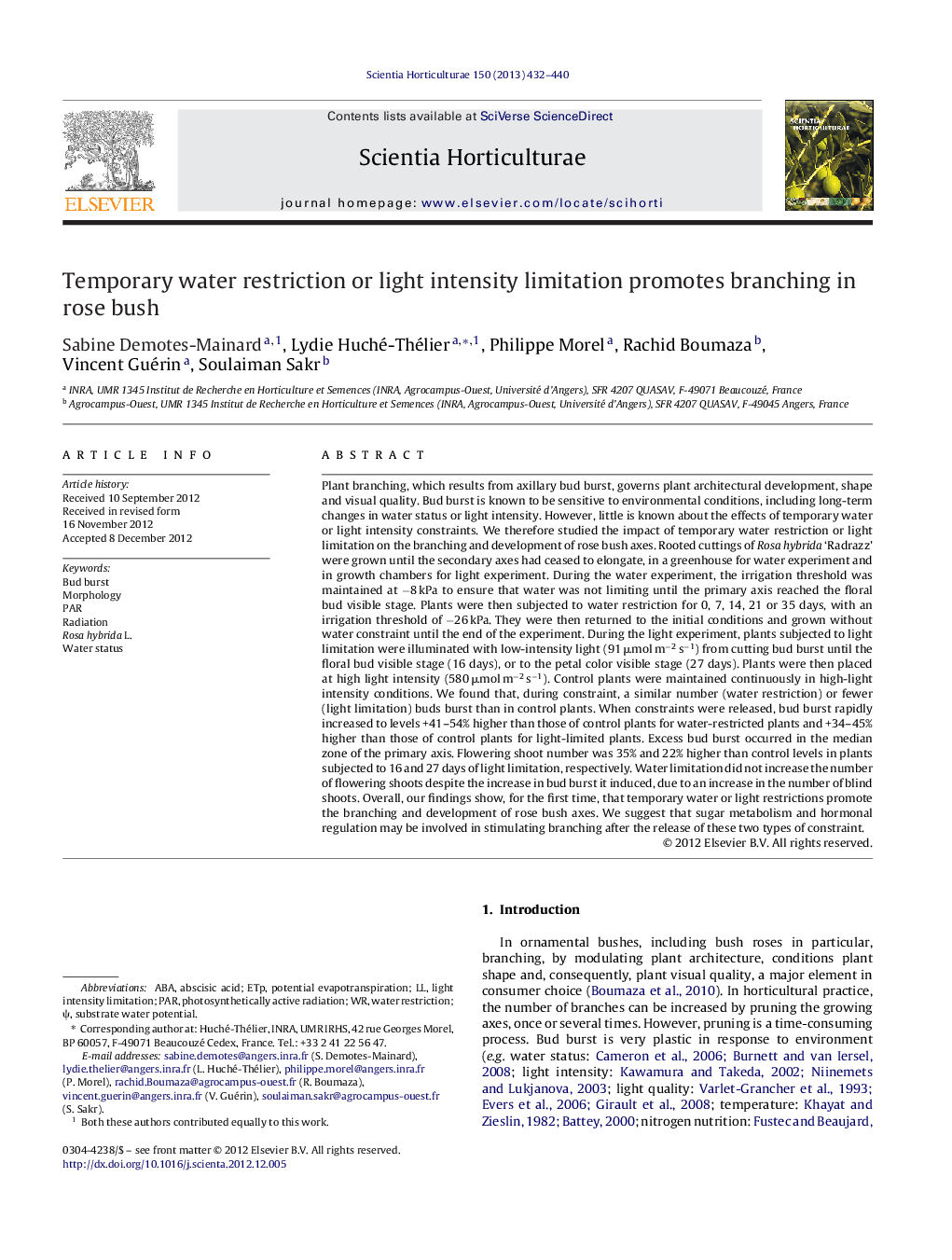| کد مقاله | کد نشریه | سال انتشار | مقاله انگلیسی | نسخه تمام متن |
|---|---|---|---|---|
| 4567302 | 1628848 | 2013 | 9 صفحه PDF | دانلود رایگان |

Plant branching, which results from axillary bud burst, governs plant architectural development, shape and visual quality. Bud burst is known to be sensitive to environmental conditions, including long-term changes in water status or light intensity. However, little is known about the effects of temporary water or light intensity constraints. We therefore studied the impact of temporary water restriction or light limitation on the branching and development of rose bush axes. Rooted cuttings of Rosa hybrida ‘Radrazz’ were grown until the secondary axes had ceased to elongate, in a greenhouse for water experiment and in growth chambers for light experiment. During the water experiment, the irrigation threshold was maintained at −8 kPa to ensure that water was not limiting until the primary axis reached the floral bud visible stage. Plants were then subjected to water restriction for 0, 7, 14, 21 or 35 days, with an irrigation threshold of −26 kPa. They were then returned to the initial conditions and grown without water constraint until the end of the experiment. During the light experiment, plants subjected to light limitation were illuminated with low-intensity light (91 μmol m−2 s−1) from cutting bud burst until the floral bud visible stage (16 days), or to the petal color visible stage (27 days). Plants were then placed at high light intensity (580 μmol m−2 s−1). Control plants were maintained continuously in high-light intensity conditions. We found that, during constraint, a similar number (water restriction) or fewer (light limitation) buds burst than in control plants. When constraints were released, bud burst rapidly increased to levels +41–54% higher than those of control plants for water-restricted plants and +34–45% higher than those of control plants for light-limited plants. Excess bud burst occurred in the median zone of the primary axis. Flowering shoot number was 35% and 22% higher than control levels in plants subjected to 16 and 27 days of light limitation, respectively. Water limitation did not increase the number of flowering shoots despite the increase in bud burst it induced, due to an increase in the number of blind shoots. Overall, our findings show, for the first time, that temporary water or light restrictions promote the branching and development of rose bush axes. We suggest that sugar metabolism and hormonal regulation may be involved in stimulating branching after the release of these two types of constraint.
► Comparison of temporary constraints (water or PAR) to non-limitation in rose.
► Low budburst rates during the period of water restriction or light limitation.
► Rapid increase in budburst after the release of temporary constraints.
► Final budburst rates higher after temporary constraints than in continuous comfort.
Journal: Scientia Horticulturae - Volume 150, 4 February 2013, Pages 432–440